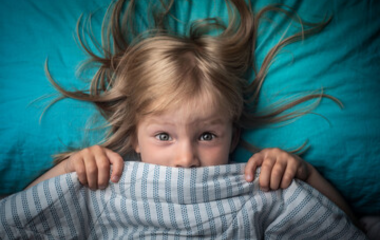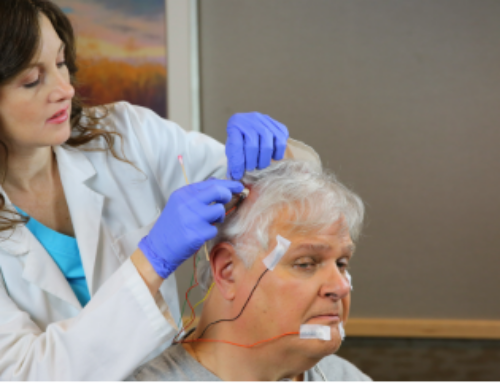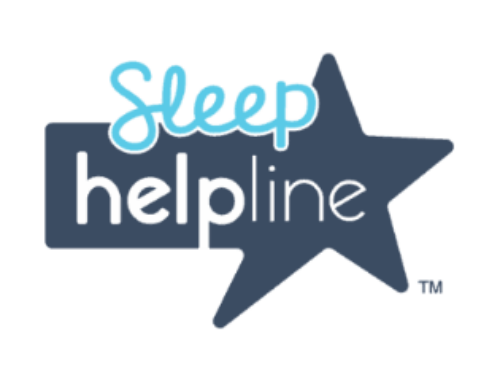Parasomnias are sleep disorders that involve undesirable events and experiences. They occur during sleep, as you fall asleep, or as you wake up. These sleep-related behaviors are very common in children and for the most part, are a normal part of childhood.
Parasomnias begin to appear as a young child’s brain and body continue to grow and develop. This type of sleep problem often occurs in children who are healthy and happy. In the vast majority of children, these sleep-related behaviors tend to go away without treatment as the child enters the teen years. These behaviors are considered a disorder when they occur repeatedly over more than three months and disrupt the lives of the child and/or the family.
Parasomnias often cause a child to appear confused or afraid. In many cases, these episodes disturb the parent or sibling much more than the child. Usually, the child never becomes completely awake. He or she often has no memory of the event when morning comes.
In almost all cases a parasomnia is unrelated to any kind of mental problem in children. There are some common factors that can trigger episodes of parasomnias. These factors include:
- Sleep deprivation
- Stress
- New surroundings
- Fevers
When parasomnias are recurrent over time there are other sleep disorders that can be the trigger. These include:
Although parasomnias tend to be common and harmless, they can be a severe problem for some children. Parents should contact a sleep specialist if a sleep problem greatly disturbs their child.
These are five parasomnias that are common in children:
1. Nightmares
Nightmares are the parasomnia that is most disturbing to a child. They involve dreams that seem very real. The action in these dreams tends to involve some kind of danger or threat. Dream content will depend on the age and development of the child.
Nightmares occur more often in the last half of the sleep period. A child responds to a nightmare by waking up suddenly. He or she quickly becomes alert and usually responds by crying. Unlike other parasomnias, nightmares cause the child to seek comfort from the parent.
The child often is able to recall clear details of the nightmare. But a young child may have a hard time describing the dream. He or she may be afraid to go back to sleep. The child may ask to stay with the parent for the rest of the night.
It is very common for children to have nightmares. They tend to begin having nightmares between the ages of three and six. The frequency of these disturbing dreams peaks between the ages of six and 10. Most children then begin to have nightmares less often. Some children will continue to have frequent nightmares as teens and adults.
A nightmare disorder may develop if a child has frequent nightmares that wake him or her from sleep. This disorder can cause anxiety, sleep loss, and daytime problems. In some children nightmares may be a sign of post-traumatic stress disorder. This problem occurs when the child experiences a traumatic or stressful event. In his or her dreams the child may re-enact the event.
Sleep terrors, also called “night terrors,” have features that are similar to nightmares. They also involve intense feelings of fear. Yet sleep terrors are much less disturbing to the child. He or she rarely wakes up fully during an episode. Unlike nightmares, sleep terrors tend to occur in the first half of the night.
For a parent or caregiver, sleep terrors may be the most disturbing childhood parasomnia. The child sits up in bed and makes a loud, piercing scream or cry. The child has a look of intense fear on his or her face. Other physical signs also may occur. These include:
- Sweating
- Rapid breathing
- Rapid heart rate
- Wide-open eyes
- Muscle tension
Sleep terrors tend to pass in less than five minutes. A child who is having an episode often resists being comforted. It usually is better if the caregiver does not try to wake the child. If left undisturbed, he or she returns to sleep quickly.
Sleep terrors are not as common as nightmares. They occur in up to six percent of children. Episodes tend to emerge in children between the ages of four and 12 years. A child usually stops having episodes as he or she enters the teen years.
3. Sleepwalking
Like sleep terrors, sleepwalking occurs most often in the first half of the night. A child tends to be fairly calm and quiet during an episode of sleepwalking. After sitting up in bed, he or she gets up and begins to walk around. The child may walk toward a light or into the parents’ bedroom. Although the child is still asleep, his or her eyes are wide open. The eyes have a confused, “glassy” look to them.
Sleepwalkers can move about well without running into anything. Sometimes a child may walk down a flight of stairs, toward a window or out a door. This can put the child at risk. But injury or harm to a child during sleepwalking is rare.
A child can be hard to awaken while sleepwalking. Typically an episode ends within five to 15 minutes. Sometimes the sleepwalking may end with the child in an unusual place. Once he or she is awake, the child is likely to be very confused. With no memory of the event, he or she does not understand what is happening. The child may be frightened if the caregiver displays strong fear or panic. In some cases, the child may return to bed and continue sleeping without ever becoming alert.
Sleepwalking is very common in children. It can begin as soon as a child is able to walk. Almost one out of every five children sleepwalks. A child is more likely to sleepwalk if one or both parents have a history of the disorder. Episodes of sleepwalking peak between the ages of eight and 12 years. In most children sleepwalking ends as the child enters the teen years.
Confusional arousals also occur in the first half of the night. The child sits up in bed with a bizarre, confused look on his or her face. The child may appear to stare unresponsively at the caregiver.
An episode also may include confused speech, yelling, and thrashing in bed. It can be very hard to awaken the child. Some symptoms of confusional arousals may be similar to sleep terrors. But confusional arousals do not involve the symptoms of intense fear that are common in sleep terrors.
Trying to comfort the child may make him or her even more agitated. Episodes tend to end in five to 15 minutes. But in some children, they may last as long as 30 to 40 minutes. Although the episodes may frighten parents, the child normally has little or no memory of the event.
Confusional arousals occur in almost one out of every five children. Young children who have confusional arousals often sleepwalk when they are older. Confusional arousals tend to be harmless to the child. They occur less often in children after the age of five years.
5. Bedwetting
Bedwetting, known as “sleep enuresis,” is a common problem in childhood. Urinating is a reflex for infants when they are asleep and awake. This occurs up to about 18 months of age. From 18 months to about three years of age, a child learns to delay urination when the bladder is full.
First, the child learns to do this while awake. At a later age, he or she learns to do this while asleep. The developmental maturity of the child will help determine the age at which he or she gains this skill.
Most children should be able to control their bladders during sleep by the time they are about five years of age. Thus bedwetting is not considered a sleep disorder unless it occurs at least twice a week in a child who is at least five years of age. A child who has been staying dry may begin to wet the bed after a period of stress. This includes such things as a parental divorce or physical abuse.
Bedwetting also can result from a problem or infection in the urinary. In some children, it can be related to a problem in the body’s production of a hormone called “vasopressin.” The body normally increases the amount of vasopressin during sleep. This hormone reduces the amount of urine that the kidneys produce. If the child’s body does not produce more vasopressin, he or she will have more urine than the bladder can hold overnight.
Bedwetting occurs in about 10 percent of six-year-old children. It is less common as children get older. Boys are more likely than girls to have a problem with bedwetting. A child also is more likely to struggle with bedwetting if a parent or sibling wet the bed as a child.
Bedwetting can embarrass the child. How well the child’s family deals with the problem is very important. Their reaction will determine to a great extent how severe it becomes. Although bedwetting tends to go away as the child ages, some children will need medical help.





